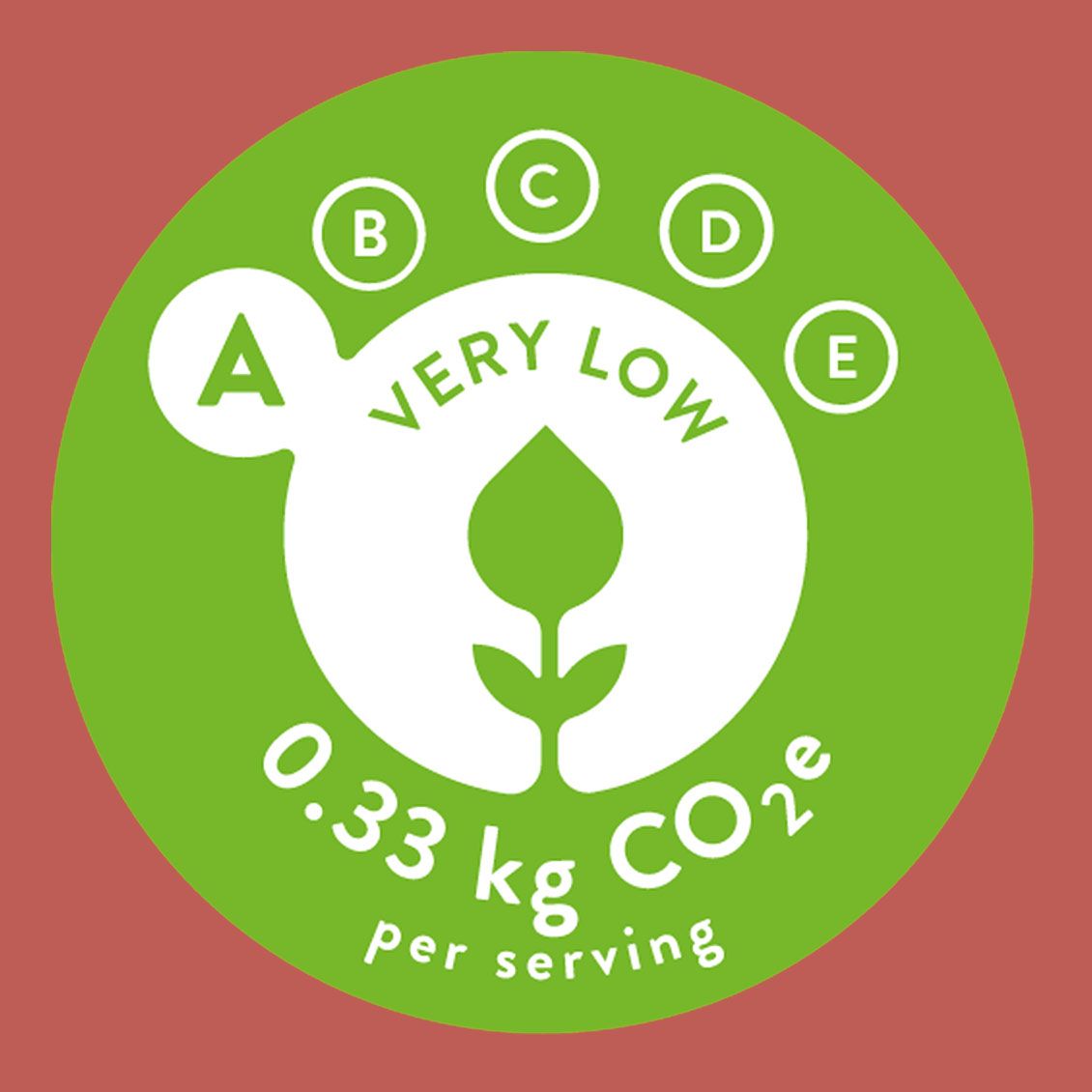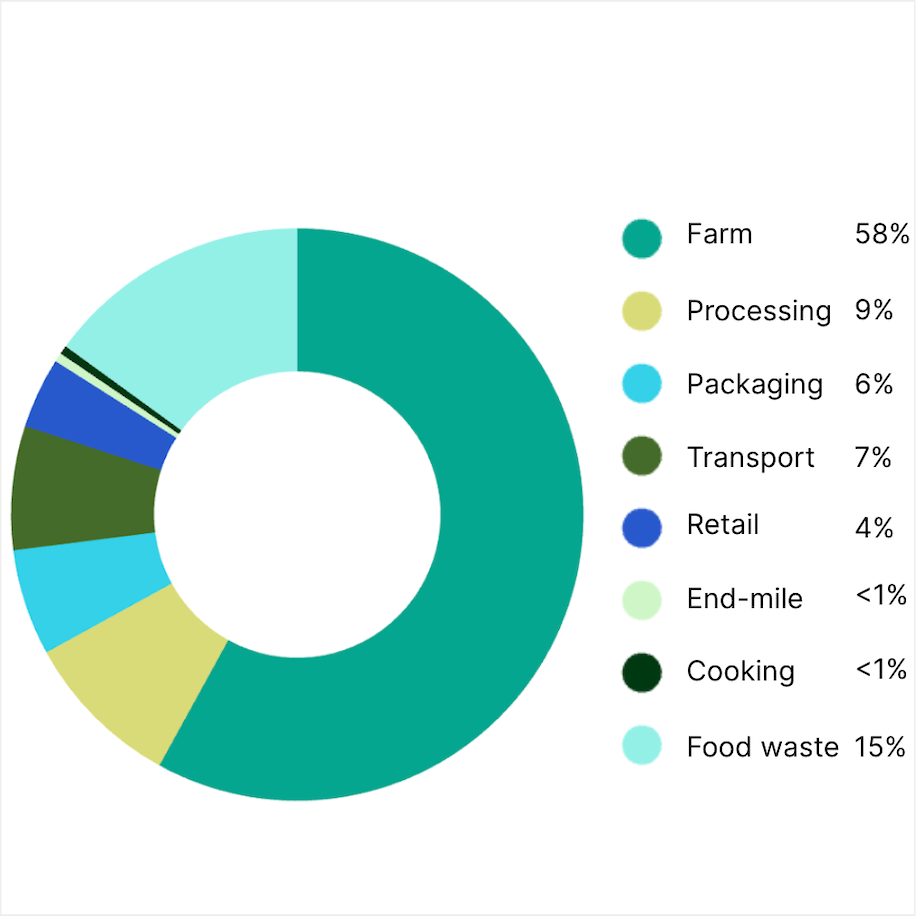The Tiramisu Overnight Oats breakfast dish is not only a social media cult classic, but it also sets you up with key nutrients for the day, as well as being a sustainable food choice.
Very low carbon
This breakfast recipe is VERY LOW carbon with 1.19kg CO2e / kg. This meal has an A carbon rating or ‘Very Low’, which is largely down to the hero ingredient in this product: oats, as well as the use of coconut yoghurt instead of dairy yoghurt.
The labels display the carbon footprint per serving of each food item, measured in kilograms of CO2-equivalent (kg CO2e). CO2-equivalent. The labels separate food items by five impact ratings – ranging from A to E – indicating a footprint score from ‘Very Low’ to ‘Very High’. Each of the ratings correlates to a traffic light colour, helping to guide users towards more sustainable food choices. The level of impact is assigned based on the carbon intensity (carbon footprint per kilogram) of the food item.
Foodsteps carbon labels can be thought of in the same way you would for nutritional labelling, but instead of providing guidance on the calories, salt and fat we should eat in a day, they provide guidance on how to eat to minimise food related emissions and stay within the planetary boundaries required to feed the planet sustainably by 2050.
The labels display the carbon intensity of each food item, measured in kilograms of carbon dioxide equivalent per kilo (kg CO2e/kg). The labels separate food items by five impact ratings – ranging from A to E – indicating a footprint score from ‘Very Low’ to ‘Very High’. Each of the ratings correlates to a traffic light colour, helping to guide you towards more sustainable food choices. The level of impact is assigned based on the carbon intensity (carbon footprint per kilogram) of the food item.
It is recommended to eat A-rated recipes to support a stable and resilient earth.
Life-cycle Assessment (LCA) Data
72% of the carbon footprint in this dish comes from the farming / sourcing of the ingredients.
The carbon footprint of food items is calculated from cradle-to-grave, so starting from the emissions of production of all inputs to the farm, and going right through to the emissions from disposal of any waste at the end of the life-cycle.
Foodsteps uses leading Life-cycle Assessment (LCA) data to account for the impacts at each stage of a food’s life cycle including farming, packaging, processing, transport, retail, cooking and waste. The LCA values are largely based on a meta-analysis by Poore and Nemecek (2018) as well as subsequent research.
The carbon footprint of food items is calculated to reflect average British consumption, using international trade data to map where food in the UK is typically sourced from over a year.
The mighty oat
Oats are part of the grains family and can grow in diverse environmental conditions and on a variety of soil types, including acidic soils. Oats are also a great break crop, which means that they’re able to replenish the soil between harvesting and seeding. Additionally, these hardy crops can thrive in a whole range of terrains and climates, and require a relatively low amount of water, especially in comparison to other grains like rice and corn. The great news is that whilst they are working hard for the environment they are also a great source of protein, fibre and amino acids.
Did you know that by opting for the Tiramisu Overnight Nights over the Big Boy Bircher, you could reduce the carbon footprint of your meal by 71%?
What is kg CO2e?
CO2e refers to the impact of greenhouse gases like methane and nitrous oxide in terms of equivalent global warming potential of carbon dioxide.
For more information about Foodsteps’ methodology see: https://www.foodsteps.earth/foodstory/standard/coco-di-mama or visit their website here.




